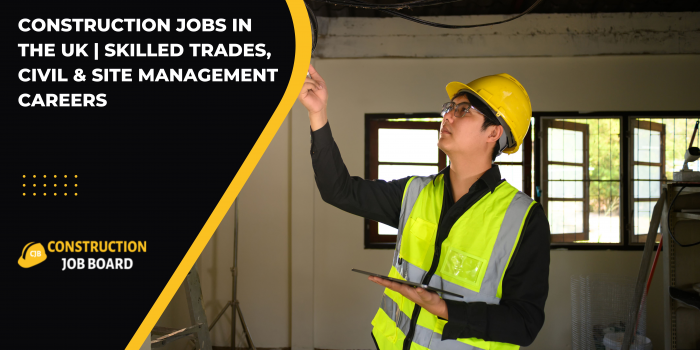The Skilled Labour Shortage in UK Construction – Hiring Trends & Opportunities 2025
Aug 11, 2025

The Skilled Labour Shortage in UK Construction: What It Means for Hiring
The UK construction industry is now facing one of its biggest challenges for decades - a growing shortage of skilled labour. Employers are struggling to find qualified workers for everything from infrastructure projects to residential developments. This shortage of qualified construction workers is impacting project timelines but also creating a competitive labour market, affecting wages and recruitment strategies across the whole country.
Reasons for Skilled Labour Shortage
There are several explanations for the shortage of skilled trades and labour in the UK construction sector:
Ageing workforce: The retirement of experienced labour has created a skills gap that is not being filled.
Reduced EU migration: Brexit has curtailed the migration of labour from overseas.
Increased demand: Demand for skilled trades and labour has increased because of infrastructure projects undertaken by government and housing targets requiring skilled trades and labour.
Training gaps: New entrants into the workforce are not being sufficiently trained to take the position of retiring workers.
Effects on Employers and Hiring Practices
For employers, this shortage means changing hiring processes and with more people looking to maintain a competitive package to attract talent, particularly for skilled trades and labour roles in public and private sector improvements.
Employers are increasingly turning to dedicated job boards or websites like Skilled Trades & Labour Jobs and Labourer Jobs to target residents who are qualified and experienced job seekers.
The Increased Demand for Labourer Jobs
Labourer jobs are an important component for keeping projects on track. While they may not require always require formal qualifications, labour roles require stamina, sense of safety, practical construction skills, and to be physically fit. The shortage of general and skilled labourers meant that employers were not able to a job and keeping people employed when they were either job hunting or regular work ended because of uncontrolled change in our lives. In almost all cases, employers were able to fill their labour positions quickly with higher pay and improved working conditions that ultimately brought on new jobs for job seekers in most communities, sectors, industries and workforce.
Skilled Trades: The Foundation of UK Construction
Skilled trades and labour occupations — carpenters, bricklayers, electricians, and plumbers — play crucial roles in any quality delivery. As the industry's number of trained professionals shrinks, businesses are now focusing on creating apprenticeships, in-house training, and developing relationships with technical colleges to produce future trades talent.
What Employers are Doing to Address the Shortage
Many employers and industry bodies are acting to address the skills shortage — including
Upskilling current workforce - Training to improve skill sets.
Apprenticeships - Attracting young workers (ages 18-28) into the industry.
Flexible contracts - Offering short-term contracts and part-time positions.
Better pay and conditions - Talented candidates need to see competitive pay and conditions.
Diverse Welcoming Work Environments - Encourage more women and diverse candidates to the Construction workforce.
Why job seekers should take advantage of the current circumstances.
For job seekers, the current lack of candidates presents an opportunity. With employers competing for skilled workers, candidates can negotiate a higher rate of pay, secure training agreements, and find long-term career progression in the sector. For people interested in roles, they can look for labourer roles or look through the latest skilled trades job vacancies for opportunities in light of demand.
Concluding thoughts
The skilled labour shortage in UK construction presents a problem for employers but a golden opportunity for job seekers. By addressing the training gaps, offering competitive packages and buying into a better, broader recruitment strategy, the industry can address the skills gap and accommodate future demand.
Whether you are an employer looking for talent or a job seeker looking for opportunity, organisations like Construction Job Board are helping to connect people with jobs.
















































































